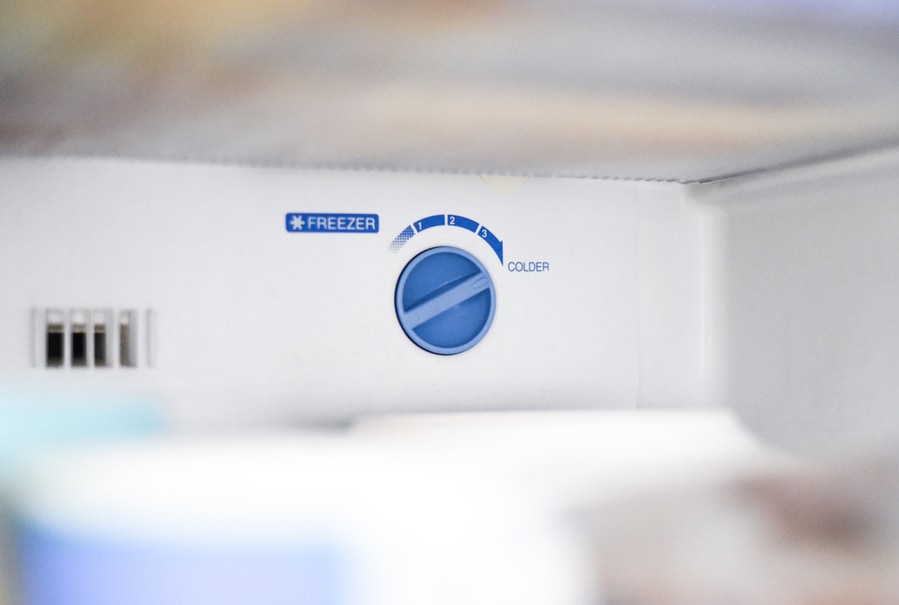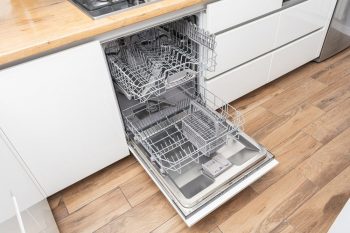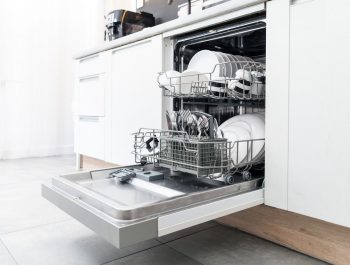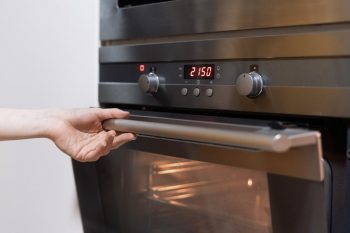
Have you ever opened your refrigerator door to find all of your food perspiring with condensate? If your refrigerator is struggling to maintain a cool climate, there are a few things you can do to regulate its internal temperature.
Here’s why your refrigerator’s temperature keeps changing and what you can do to prevent it.
- Leaving your fridge door open can cause cool air to escape. The same happens with a broken door gasket.
- Dirty or blocked sensors could make errors in temperature detection that lead to unnecessary temperature changes.
- Condenser coils covered in dirt may struggle to absorb warm air, thus preventing the fridge from cooling the interior compartment.
- Accidental changes to a fridge’s thermostat may happen outside of your knowledge.
Refrigerators have various sensors inside to help them detect the temperature and make the necessary adjustments to cool your food.
This automatic function may become impaired due to damage, dirt, or simple user mistakes.
Reasons Why Your Refrigerator’s Temperature Keeps Changing
1. The Door Was Left Open

Before considering any more serious reasons, you might want to ask yourself if the door was left open. When you open your fridge door, you allow cool air to escape and warmth to enter.
Repetitive opening and closing over a short period could introduce enough warmth into your fridge to cause significant temperature changes.
If no one has been nosing around in your fridge, there might be a problem with the door gasket. That rubber material creates a tight seal that prevents unwanted temperature changes.
Cool air could leak out even when the door appears closed if the seals are broken or damaged.
Some modern-day refrigerators have door alarms that let you know when the door is not properly closed or left open for too long.
You can fix this problem by ensuring there’s nothing in your fridge preventing it from closing properly. If the door gasket is damaged, call a professional for repair.
2. Its Sensors Are Dirty or Blocked

Inside your fridge, often along the sides or the back panel, are sensors that detect the temperature inside your unit.
Depending on their sense, they signal the system to adjust temperatures to maintain proper cooling. Unfortunately, if the sensors are dirty, they could struggle to pick up an accurate reading of the internal conditions of your fridge.
In the same way, placing certain items in front of the sensors could lead to errors in detection. For instance, if you place a hot food container just in front of the rear sensor, it could assume that the whole fridge is hot, decreasing the temperature.
The opposite happens if you place something cold in front of the sensor.
You can fix this problem by steering clear of the sensors. Ensure there’s enough room in front of the sensors to avoid errors in temperature detection. If they’re dirty, wipe them down to clean them.
3. The Condenser Coil Needs Cleaning

The condenser coils collect warmth inside your fridge to replace it with cool air. Unfortunately, they could fail at this temperature exchange when they’re too dirty, particularly because warm air must directly contact the coils to transfer heat.
You can fix this problem by regularly cleaning the coils to maintain proper fridge temperatures. First, peek at the condenser coils at the bottom back of your fridge. It might be time to clean them thoroughly if they’re caked in dirt.
4. Someone Is Adjusting the Settings

If you’re living in a shared space, you might have to consider the possibility that someone in your home is adjusting the fridge thermostat.
In smaller refrigerators, the thermostat can be controlled by a small knob or a slider inside the main fridge compartment just within reach of curious children. On larger fridges with touch displays, adjusting the thermostat can be achieved by pressing just a few buttons on the panel.
You can fix this problem by asking the other people in your home if they’ve adjusted the thermostat or seen anyone else tinkering with the settings.
If none of the explanations above explain why your fridge’s temperature keeps changing, something more serious might be happening inside your refrigerator.
Call the manufacturer to schedule an inspection if it’s still under warranty.
Leaving the problem to persist without properly resolving it could lead to more serious damage and malfunction.
Summary
An ever-changing refrigerator temperature can cause trouble for your perishable goods.
Fortunately, the problems that cause this are often issues you can fix alone. But just in case your refrigerator is facing more serious complications, see that you call your trusted maintenance service to give it a thorough inspection.
Frequently Asked Questions
How Do I Reset My Fridge’s Thermostat?
To reset your fridge thermostat, you can perform a power cycle. First, unplug the appliance and wait 30 seconds to 1 minute before restoring power.
This should reboot the system and resolve minor bugs concerning the thermostat.
How Long Does It Take for a Refrigerator To Regulate Temperature?
Fresh out of the box, a fridge may take up to 24 hours before it achieves a suitable, stable temperature.
Before this time, the fridge may constantly adjust its internal climate as it senses temperature changes and adjusts to your cooling requirements.












